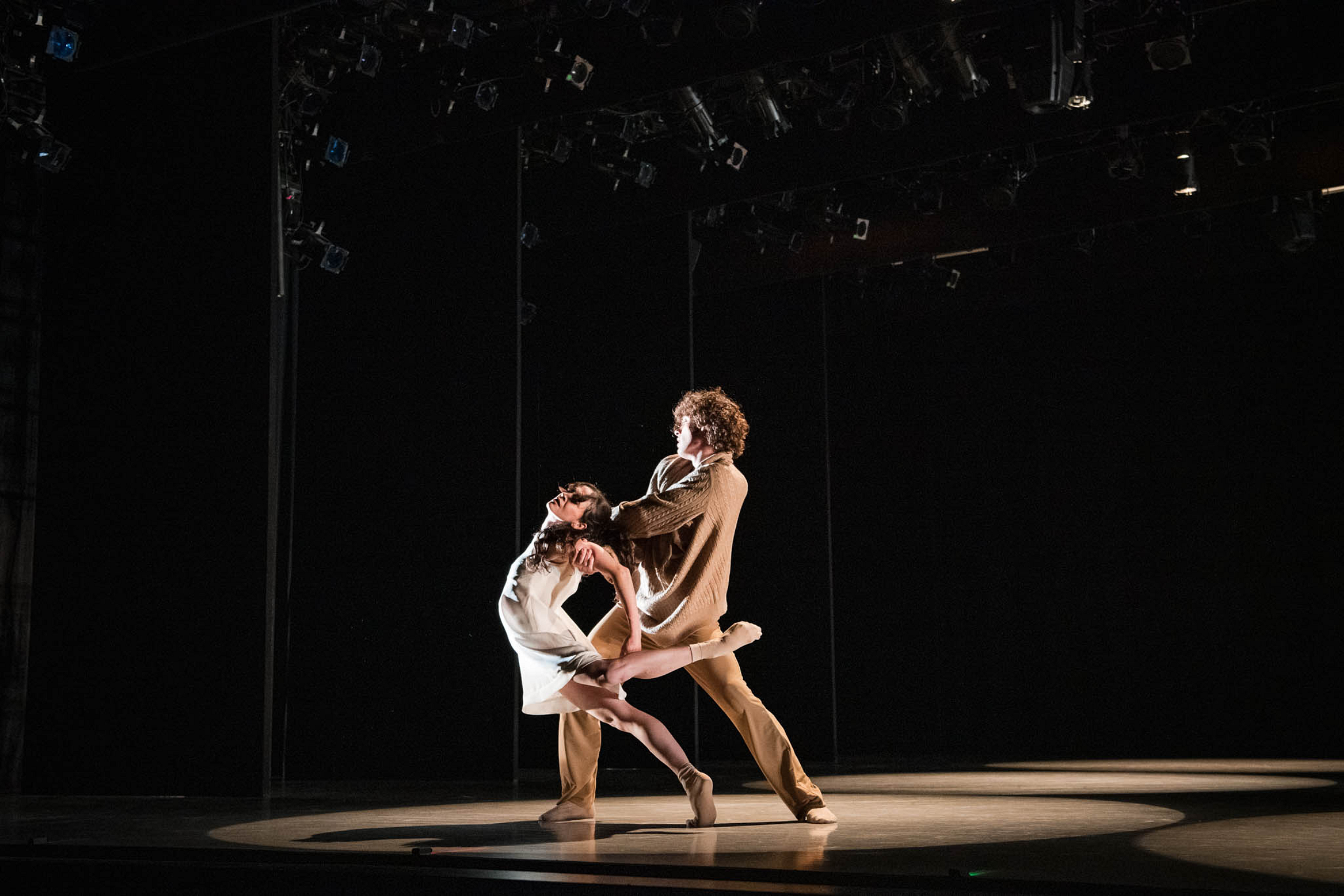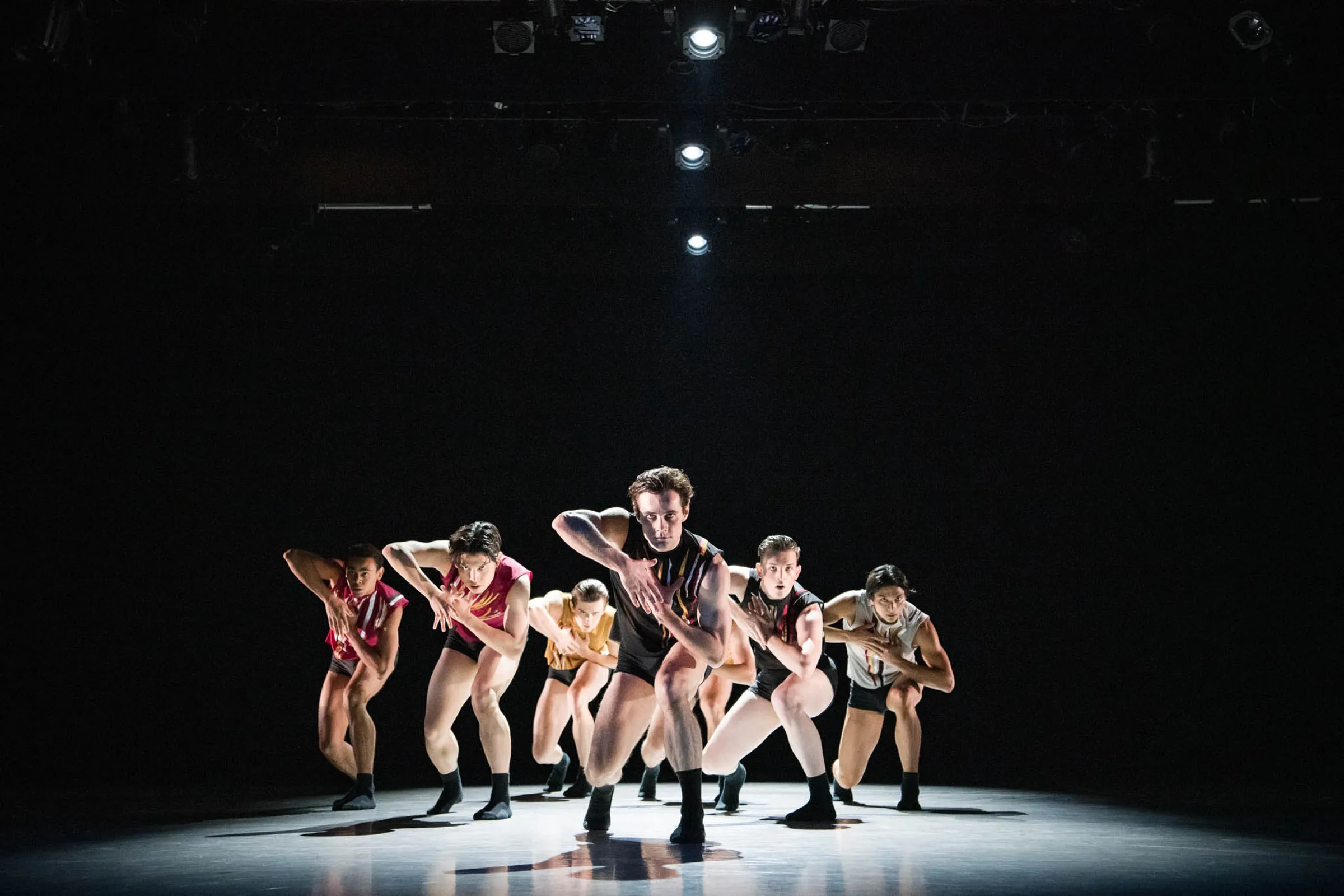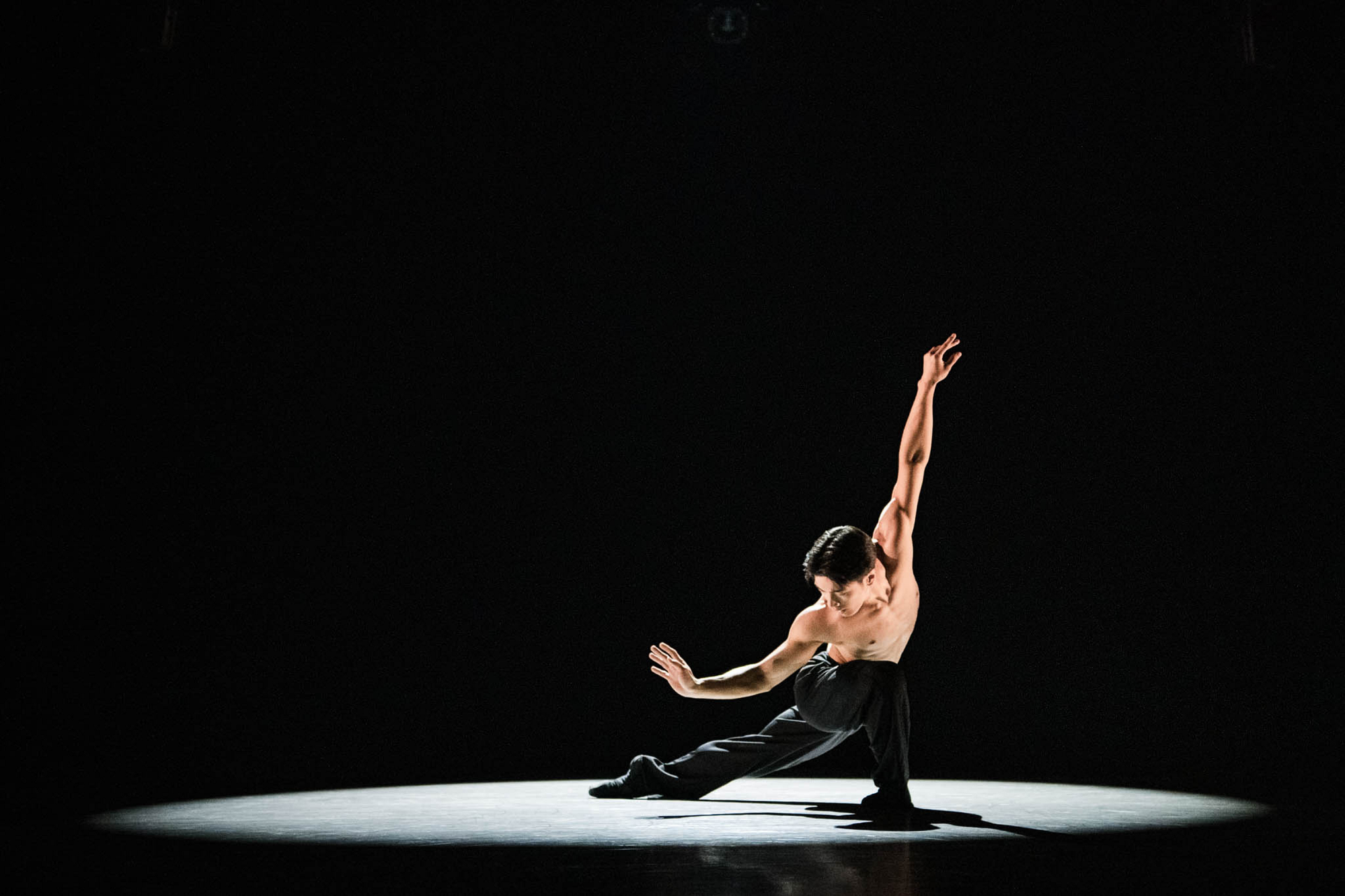Tulsa Ballet: Creations In Studio K
Tulsa Ballet
Sept. 14, 2024
Blink and you’ll miss it: the moment when, at the end of one of the most irresistible duets I’ve ever seen on a Tulsa Ballet stage, a woman crawls up from underneath a baggy sweater her man is wearing, belly to belly with him until her face pokes out of the neck hole, facing his. In a perfect magic-trick switcheroo, she ends up wearing it herself, standing alone, as he ducks down out of it and walks away.
The “Jumper Duet” (jumper = sweater; Alice Topp, the choreographer, is Australian) is the last movement of Square Pegs, a short piece I could have watched again immediately — something I experience now and then with the works in TB’s annual Creations in Studio K triple bill. I still don’t quite know how a lot of things that happened in Square Pegs happened. How Aubin Le Marchand, for instance, managed to lift Jaimi Cullen upside down (in that same duet) with apparently only her flexed foot at the back of his neck as an anchor point. Or how Jun Masuda seemed to be breathing through gills instead of lungs in a long opening solo, a shapeshifting ripple of underwater buoyancy in a giant pool of light, or how he casually stopped in a one-legged balance after six of the fastest pirouettes in history.
In a video interview shown after the piece, Topp said she was interested in the idea of fitting into different environments — “how we change, how we sculpt and curate ourselves.” So much of how that “fitting in” happens, that self-sculpting and self-curating, is unconscious and invisible to us as we’re doing it in daily life. Here, Topp sends ten dancers through patterns of braiding and releasing, knitting and unraveling, winding and unwinding that evolve so smoothly they’re barely perceptible. What we see, on a floor whose colors and patterns keep shifting too, is bodies discovering new relations in space and time — a slap of a hand on the floor after a moment in the air; sleight-of-hand over-the-back lifts; legs suspended for a moment in a diamond shape; one man facing the audience with a glowing smile, standing still in a little illuminated square as he raises his arms wide for what seems like forever.
Square Pegs, set to music by Michael Nyman, is a fresh example of how dance can bring a concept, a feeling or a metaphor (like two people trying to fit into one sweater, one shared life) into the 3D world of muscle and nerve. Getting to see a new work by Topp, one of the best emerging dancemakers on the international scene, created for Tulsa dancers is a real treat — and an instance where a choreographer and a company truly succeed in fitting together.

“Creations” is a special show in any TB season, a quick 75 minutes focused on the creative process presented at Studio K, its 300-seat theatre designed specifically to present the new contemporary works the company commissions each year. As managing director Scott Black noted, the depth of the “house,” where the audience sits, is exactly the same as the depth of the stage; viewers and dancers meet in the exact middle, a setup that delivers a disarming intimacy from both sides of the curtain. (I’ve performed at Studio K several times and can assure you that the dancers feel as close to you while dancing as you feel to them while watching.)
The three pieces on this Creations program — all, for the first time in the series’ 17-year history, by choreographers who are women — make different use of that intimacy and of the TB dancers’ technical gifts. Topp tucks them subtly into the edges and pockets of her movement, so you don’t quite know what all they’re making happen until you stand back and see the whole, like a complex woven garment. In Chicago-based choreographer Stephanie Martinez’s Something To Remember You By, virtuosity is front and center, playfully pushing the dancers to their edges.
Using classical music, Martinez ranges through many emotional temperatures, juxtaposing solo moments and duets with trios, quartets, and ensemble dances, sometimes overlapping several configurations at once. I loved the line of men, facing away from us, that gradually crosses the stage behind a pas de deux, like a basso continuo under the pair’s shimmering duet. A sensitive tango for Shunsuke Nakamura and Paolo Tarini starts as a trio and ends with them sparking and diving within a larger group. This piece was created for Tulsa Ballet II two years ago; several of those dancers have now made their way into the main company. The current TBII dancers delivered Martinez’s plucky musicality, high-speed footwork, and decisive, quirky upper-body motifs with maximum focus and fun.
I wrote “WHO IS SHE??” in my notes not once but three times during this show. One time, in Martinez’s piece, the dancer turned out to be Zoe Ferla, who moved through a fourth-movement allegro sequence with a zesty panache that reminded me of TB’s co-founder Moscelyne Larkin. It was Alison Cervantes who caught my eye in Square Pegs—she’s a University of Oklahoma-trained firecracker who came up through TBII and, as a corps de ballet dancer now, matched principal dancer Masuda in flow and presence during a silky, earthy duet.

In Young Soon Hue’s DI.VER.SI.TY, the choreographer’s sixth work for TB, soloist Aina Oki is the one who did me in. Hue’s work doesn’t tease or beguile; she puts what she wants you to see right in front of you. With its relentless snap and punch, it can feel a little on-the-nose: note the “mosaic” stripes on the dancers’ identical-except-in-color tunics, the sharp pulses out from the chest, the prevalence of unison movement. So I appreciated the shift that happened during Oki’s duet with the rock-solid-powerful, Henry Cavill-esque Jonathan Teague Applegate. (I saw the Saturday “second cast” performance; Nao Ota and Masuda did these roles at other shows. With dancers from 14 countries, TB is pretty diverse, as ballet companies go.)
My own dance students are probably tired of hearing me talk about how important the eyes are in pulling the audience into a performance. But Oki showed the depth that sort of intentional focus can bring. She folded into herself, then reached her gaze toward us in a long balance, with Applegate holding steady beside her. He faced the back of the stage, she faced the front, then they moved backwards together, gliding into the dark as they’d emerged from it at the start of the duet. In this moment, she and Hue gave us a glimpse of something not quite delivered by the insistent athletic togetherness of the rest of the piece: the souls that, one person at a time, create the whole.
Next for Alicia: Black Broadway Tulsa’s “A Raisin in the Sun,” September 20






